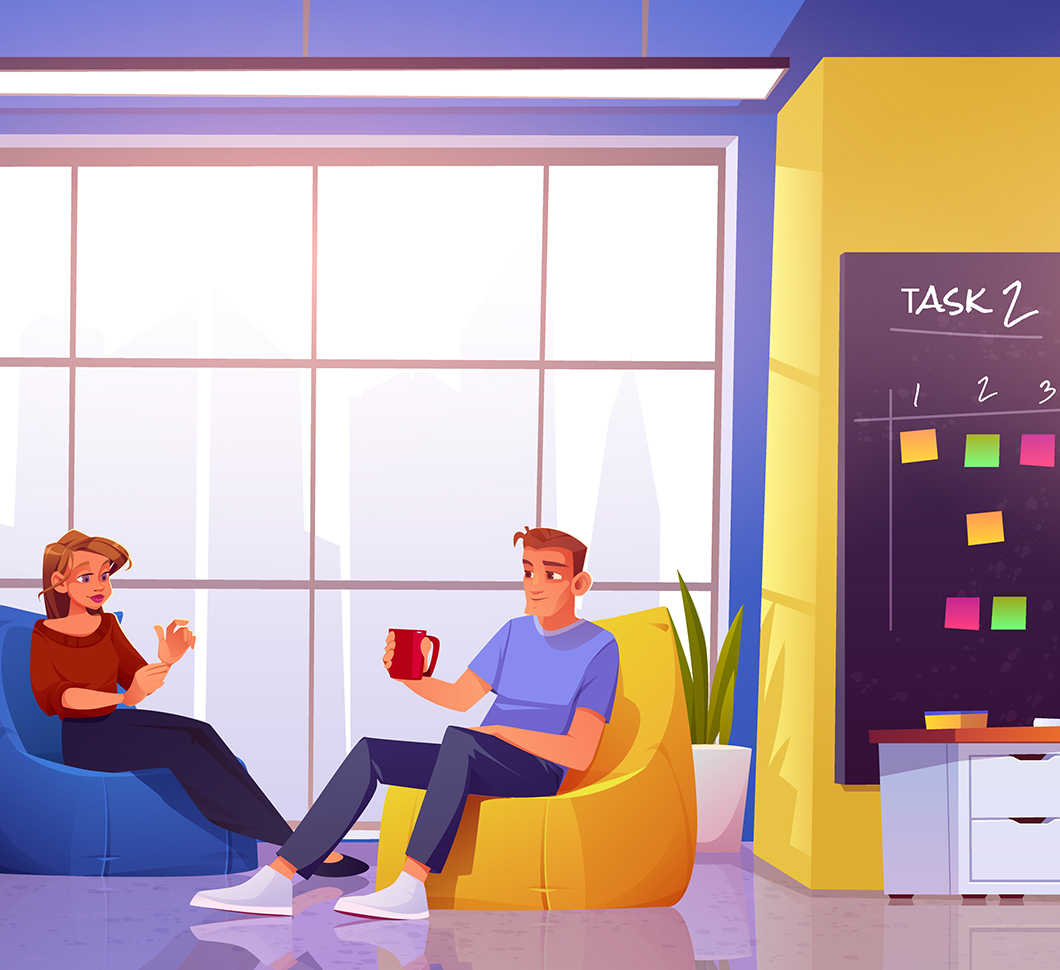Procedural generation serves as a critical tool for game development, offering a way to automate the creation of vast, detailed environments and elements which might otherwise demand an overwhelming amount of manual effort and resources. For a game art outsourcing studio, the advantages are clear: procedural techniques can drastically reduce the time and cost associated with crafting game levels and content, while also delivering a unique experience for each player.
Leveraging these methods allows studios to focus their artistic talents where it counts — on enhancing the distinctiveness and quality of assets that procedural systems can't fully replicate, such as character models and intricate set pieces. By integrating procedural generation wisely, studios can achieve more with less, pushing the boundaries of what their games can offer to players.
Decoding Procedural Generation: More Than Just Randomness
Procedural generation extends beyond simple randomness. It involves sophisticated algorithms that systematically create game content such as landscapes and puzzles, ensuring variability without sacrificing design quality. This approach allows developers to build expansive game worlds efficiently, offering players a fresh experience every time.
What Is Procedural Content Generation in Games?
Procedural Content Generation (PCG) refers to the use of algorithms to create game elements without human intervention automatically. In games, PCG can generate a variety of content, from complex terrain and intricate levels to diverse character items and enemy encounters. This technology relies on rules and parameters set by developers, ensuring that generated content meets specific design standards and player expectations.
The primary advantage of PCG is its efficiency. By automating the creation of environments and objects, developers can populate large game spaces quickly, significantly reducing production times and costs. Additionally, PCG enhances replayability; since environments can change with each game session, players encounter a new experience every time they play.
Developers often employ PCG in survival and exploration genres, where expansive and unpredictable environments contribute to gameplay dynamics. For example, in a survival game, PCG can continuously create unforeseen challenges and resources, keeping gameplay engaging and unpredictable. By integrating PCG, studios not only streamline their workflows but also enrich the gaming experience, providing endless variety and surprise for the player community.
Key Algorithms Behind the Magic
Several algorithms form the backbone of procedural generation in games, each chosen based on the type of content needed. For procedural games that require terrain creation, Perlin noise and Simplex noise are popular choices. These algorithms generate natural-looking textures and landscapes by creating gradient patterns that simulate the randomness of nature.
For games where the layout of levels is crucial, the cellular automaton algorithm provides a solid framework. It uses a grid of cells, each of which changes state based on a set of rules that consider the states of neighboring cells. This method is particularly effective for creating complex cave systems or city layouts in procedural content generation. However, the role of polygon count in 3D modeling becomes more impactful in this case, so you should pay careful attention to this aspect.
Lastly, random seed generation plays a pivotal role. By starting with a seed, a base number used to initialize the randomness, procedural content generation ensures that while the output appears random, it is actually reproducible, allowing for consistent testing and gameplay experiences. These algorithms ensure that procedural generation delivers both variety and consistency in game environments.
Top Advantages for Studios
Procedural generation in game design offers significant benefits that enhance studio operations and product offerings. Here are some key advantages:
- Cost-efficiency. Procedural content generation in games reduces the need for large teams of artists and designers, allowing studios to allocate resources more effectively.
- Enhanced replayability. Games that use procedural generation provide unique experiences with every playthrough, encouraging players to engage with the game repeatedly.
- Rapid development. Studios can create large-scale environments and detailed content much faster than could be achieved manually, speeding up the development cycle.
Using procedural generation, studios can meet the increasing demand for complex and immersive game worlds without a corresponding increase in time and labor costs. What is procedural generation in games? It's not just a tool for creating randomness; it's a strategic asset that empowers studios to innovate continuously while managing resources wisely.
Streamlining Game Development with Procedural Techniques
Procedural techniques significantly enhance game development efficiency, enabling studios to create detailed worlds quickly. These methods allow studios to hire game developers who can focus on optimizing and expanding the core gameplay mechanics rather than building every element manually.
Cutting Costs and Time Efficiently
Procedural generation in game design enables studios to cut both costs and development time effectively. By automating parts of the content creation process, it minimizes the need for extensive manual labor in areas like environment layout and object placement. Key benefits include:
- Scalability. Developers can create larger game areas without a proportional increase in time and resources.
- Consistency. Automated processes ensure that all game elements adhere to predetermined quality standards, reducing the need for corrections.
- Flexibility. Changes to game design can be implemented quickly by adjusting algorithms instead of manually reworking large sections.
So, what is procedural generation in game design? The short answer is that it represents a strategic tool aiding in automated content production for games. It not only simplifies the development process but also ensures that studios can adapt swiftly to new creative ideas or market demands without significant disruptions or overhead costs.
Boosting Player Engagement Through Unique Experiences
Procedural generation in games is key to delivering varied and engaging content that keeps players coming back. By automating the creation of environments, items, and scenarios, each player's experience can differ significantly from others, which heightens the sense of discovery and surprise.
For instance, procedural games that tailor challenges or environments to a player's actions promote a deeply personalized gameplay experience. Such dynamic adaptation makes the game feel more responsive and rewarding, directly enhancing player engagement and satisfaction. Furthermore, procedural content generation ensures that no two playthroughs are exactly alike, which can be crucial for the replayability of a game.
Common Pitfalls and Solutions
While procedural generation in games offers considerable advantages, it also comes with challenges that need careful management. One common issue is the generation of repetitive or uninteresting content, which can detract from the game's appeal. To counter this, developers should incorporate sufficient variability in the generation algorithms and combine procedural elements with handcrafted designs.
Another pitfall involves the unexpected interactions between randomly generated elements, which can sometimes result in gameplay imbalances or bugs. Implementing robust testing phases that simulate numerous scenarios can help identify and fix these issues before release. By addressing these challenges, studios can fully leverage procedural content generation to enhance game quality and player engagement.
Need a boost in game dev performance? Let’s get in touch!
Real-World Magic: Procedural Generation in Action
Procedural generation brings limitless creative possibilities to game development, dynamically enhancing landscapes, characters, and narratives, making each player's journey unique.
Transforming Landscapes and Worlds Dynamically
Procedural generation breathes life into game worlds by creating diverse, expansive landscapes automatically. Games like No Man's Sky demonstrate how algorithms can produce myriad planets, each with unique ecosystems, climates, and terrains. The process uses:
- algorithmic rules that dictate terrain shapes, weather patterns, and biome distributions.
- layering techniques that ensure complexity and variety in physical features.
Such dynamic environments encourage exploration and interaction, providing a fresh experience during each gameplay session. By continually altering the game's geography, procedural generation keeps the environment intriguing and unpredictable, enhancing the sense of adventure and discovery.
Crafting Characters and Objects on the Fly
Procedural generation also applies to creating diverse characters and objects, enhancing the visual richness and gameplay variety. By parameterizing aspects like size, color, and behavior, developers can:
- generate unique NPC appearances that reflect the game's diversity.
- create countless item variations that maintain gameplay freshness.
This technique allows for a dynamic population in game worlds, where each character or object can have distinct attributes, promoting a richer, more immersive experience. Additionally, it reduces the workload on artists and developers by automating part of the design process, focusing their skills on refining key elements that enhance the game's core appeal.
Storytelling with Infinite Possibilities
Procedural content generation revolutionizes storytelling by creating narratives that adapt to player decisions and actions, offering:
- Dynamic plot development, where choices genuinely affect the story's direction and outcome.
- Endless narrative scenarios that prevent predictability and enhance replay value.
Games like Elite Dangerous utilize procedural generation to craft missions and encounters based on the player's location and previous actions, making each player's story unique. This approach not only keeps the narrative engaging but also deepens player investment as their choices have visible impacts on the game world. Such personalized storytelling is pivotal in building a lasting connection between the game and its players.
Procedural Generation in Games and Notable Success Stories
Procedural generation has catalyzed some of the most innovative developments in gaming, transforming the creation of environments, narratives, and characters.
Breakthroughs in Procedural Games
Procedural generation has led to significant advancements in gaming. Titles like Minecraft and No Man's Sky stand out for their innovative use of these techniques. Minecraft generates endless terrain, allowing endless exploration and building opportunities, which keeps the gameplay continuously engaging. Meanwhile, No Man's Sky uses procedural algorithms to create billions of unique planets, each with its own flora, fauna, and geography.

Minecraft
Such an approach not only breaks the confines of pre-designed game worlds but also provides a unique experience for every player, making each exploration genuinely unique. These games exemplify how procedural generation can be used to create vast, explorable universes that would be impossible to craft manually, showcasing the technology's potential to redefine traditional gaming boundaries.
Insights from Developers: Behind the Scenes
Developers who harness procedural generation often share valuable insights about its impact. They highlight the importance of balancing algorithmic randomness with user experience to ensure generated content remains engaging and purposeful. The development team behind Elite Dangerous noted that their procedural content allowed them to populate an entire galaxy with scientifically plausible star systems and planets, enhancing the game’s realism and scale.

Rogue Legacy 2
Similarly, the creators of Rogue Legacy utilized procedural generation to ensure that no two playthroughs are the same, thus maintaining challenge and interest. These developers stress the necessity of integrating procedural generation seamlessly with game design to avoid overwhelming players with too much randomness, thereby maintaining a coherent and satisfying game experience.
Key Lessons Learned for the Industry
The gaming industry has extracted several pivotal lessons from the effective deployment of procedural games:
- Scalability and replayability. Procedural generation significantly extends game life by adding depth and replay value, keeping players engaged for longer periods.
- Balanced design imperative. Maintaining quality in procedurally generated content necessitates deliberate design efforts to avoid generating irrelevant or low-quality elements.
- Goal-driven integration. The successful use of procedural techniques requires alignment with the game’s overarching design objectives, ensuring that randomness serves a purpose.
- Mixing elements. Blending procedurally generated environments with handcrafted content strikes a necessary balance, offering players both novelty and familiarity.
- Iterative feedback. Continuous testing and adaptation of procedural systems are crucial to refine these methods, ensuring they meet player expectations and enhance the gaming experience.
These insights emphasize the necessity of strategic application and continual refinement in using procedural generation within game development.
Procedural Content Generation in Unreal Engine

Unreal Engine, a pioneer in enabling developers to harness the power of procedural content generation, offers a robust suite of tools. The user-friendly Blueprints visual scripting system, for instance, empowers developers to dynamically create complex game environments and elements, even without extensive coding knowledge. This not only accelerates development cycles but also unlocks a world of possibilities for intricate and diverse game designs.
Key features of Unreal Engine that facilitate procedural generation include:
- Blueprints visual scripting. This system provides a user-friendly interface for creating and linking complex behaviors and game logic, which can be leveraged to generate content dynamically.
- Landscape system. Allows for the automatic creation of vast terrains based on procedural algorithms, which developers can further customize to fit specific game needs.
- Material editor. Offers the ability to create complex materials procedurally, enabling environments and objects to react dynamically to game conditions.
Together, these tools empower game developers to craft rich, immersive worlds that can vary from player to player, enhancing replay value and overall engagement. Utilizing Unreal Engine for procedural content generation helps studios efficiently produce high-quality, diverse gaming experiences.
Is there any Future for Procedural Generation in the Gaming Area?
The future of procedural generation in gaming appears promising, with ongoing advancements in technology and game design. Developers continue to explore innovative applications of procedural techniques to create dynamic, immersive experiences that captivate players and push the boundaries of traditional game design.
Cutting-Edge Technologies Shaping Procedural Content
Several cutting-edge technologies are influencing the evolution of procedural content generation in gaming:
- Machine Learning. AI algorithms are being trained to generate game content dynamically, adapting to player behavior and preferences.
- Procedural Audio. Advances in procedural audio generation allow for the dynamic creation of soundscapes and music tailored to gameplay events.
- Generative Adversarial Networks (GANs). GANs are being explored for generating realistic textures and assets, adding depth and authenticity to procedural environments.
These technologies are revolutionizing how game content is created, offering developers powerful tools to craft immersive and engaging gaming experiences. They represent significant strides toward the realization of truly dynamic and adaptable virtual worlds. As these technologies evolve, we can expect even more groundbreaking advancements in procedural content generation, further enhancing the depth and complexity of gaming experiences.
The Role of AI in Crafting Complex Worlds
AI in game development plays a pivotal role in procedural content generation, particularly in crafting intricate gaming worlds. By analyzing player interactions and preferences, AI algorithms dynamically adjust game environments and challenges to optimize player engagement. The same principle applies to AI avatars in casino, where avatars adapt their behavior and communication in real time based on each player’s activity. This AI-driven content generation enables the creation of vast, detailed worlds with minimal manual intervention, enhancing both scalability and variety in game design.
Moreover, AI facilitates the creation of dynamic ecosystems within game worlds. NPCs (non-playable characters) can exhibit complex behaviors and adapt to changing circumstances, creating a more immersive and realistic gaming experience. Additionally, AI-driven procedural generation allows for the creation of dynamic weather systems, day-night cycles, and environmental changes, further enhancing the depth and realism of virtual worlds.
Forecasting the Evolution of Game Design
The future of game design is closely tied to the evolution of procedural generation techniques. Advancements in technology, particularly AI and machine learning, will drive innovation in game design. We can anticipate several key developments:
- Enhanced personalization. AI algorithms will tailor gameplay experiences to individual player preferences and skill levels, creating more immersive and engaging experiences.
- Dynamic storytelling. Procedural narrative generation will enable the creation of adaptive storylines that respond to player choices, offering a more interactive and personalized narrative experience.
- Seamless integration. Procedural techniques will integrate more seamlessly into game development pipelines, allowing for more efficient and iterative content creation.
These trends signify a shift towards more dynamic and immersive gaming experiences shaped by the ongoing evolution of procedural generation in game design. As technology advances, we can expect procedural generation to play an increasingly prominent role in shaping the future of gaming, offering endless possibilities for innovative and immersive gameplay experiences.
How Game-Ace Can Help You with Procedural Generation
As an experienced custom game development company, Game-Ace offers expertise in procedural generation techniques to enhance your gaming projects. Our team of experienced developers leverages cutting-edge technology to create dynamic and immersive gaming experiences. By partnering with us, you can harness the power of procedural generation to unlock new creative possibilities and captivate your audience.
Whether you want to incorporate procedural content generation into an existing game or embark on a new project, our team is here to help. Contact us today to learn more about how Game-Ace can elevate your gaming experiences with innovative procedural generation solutions.
 Key Trends Shaping Gamification in Recruitment for 2026 and Beyond
Key Trends Shaping Gamification in Recruitment for 2026 and Beyond  How to Create Crypto Casino Games the Right Way
How to Create Crypto Casino Games the Right Way  AI Recruitment Games: From Real-Time Assessments to Better Hiring Outcomes
AI Recruitment Games: From Real-Time Assessments to Better Hiring Outcomes  Games for Business: Proven Strategies for Engagement and Growth
Games for Business: Proven Strategies for Engagement and Growth 


































